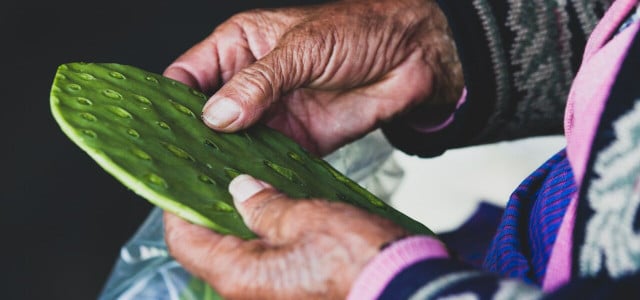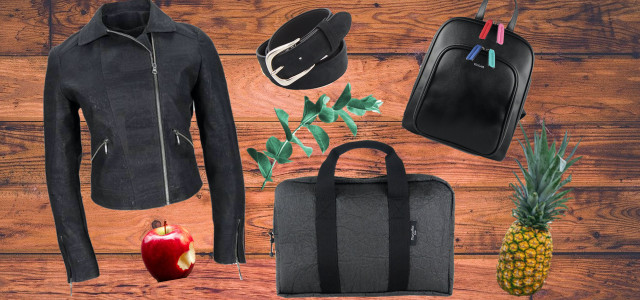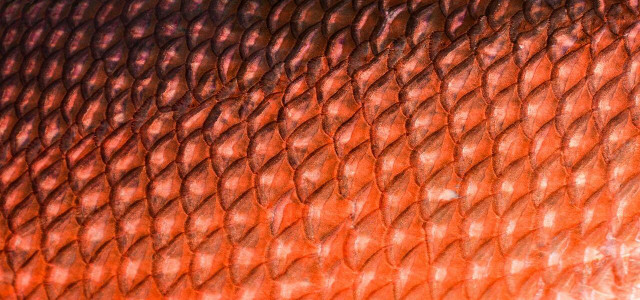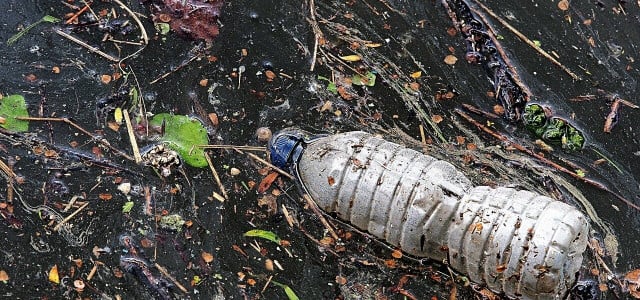Cactus leather is an exciting vegan alternative that aims to save water, minimize deforestation and contribute to animal welfare. Let's look at the innovative material.
Cactus leather is one of the most eco-friendly vegan leather alternatives currently on the market. It aims to mitigate leather’s impact on the environment by creating an alternative that is free of animal by-products or toxic chemicals. In this article, we will assess just how bad the leather industry’s impact on the environment is and why exactly cactus leather is such a smart alternative.
Leather and the Environment
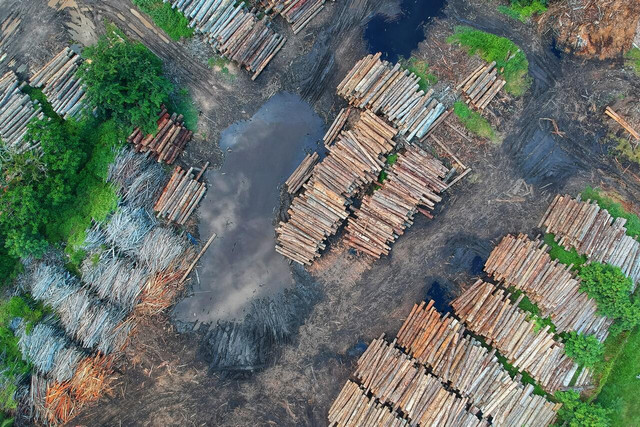
(Foto: CC0 Public Domain / Pexels / Pok Rie)
Leather production is one of the most polluting practices in the fashion industry. Let’s quickly look at the numbers. In order to meet consumers’ demand for leather, fashion brands will have to buy hides from 430 million cows per year by 2025 — and that’s just for leather, not for meat or dairy.
While some might argue that leather is a by-product of the meat and dairy industry, the high demand for leather leads to another conclusion. In Brazil, leather is one of the most lucrative business opportunities, accounting for 1.1 billion USD in revenue in 2020. Moreover, some cattle are killed exclusively for their hides, meaning leather is not always a meat and dairy industry by-product.
Cowhides are then sent off to tanneries where the skins are stabilized, usually using large amounts of water and a myriad of toxic chemicals in the process. These hazardous chemicals — some of which are even carcinogenic — often cause water pollution as they are discarded into our groundwater. The tanning process makes the manufacturing of leather so damaging that it would actually be more eco-friendly to simply let leftover hides biodegrade.
But let’s get to the most shocking fact. Did you know that the leather industry is the largest driver of deforestation in the Amazon rainforest? Cattle ranching alone is responsible for 36% of global tree cover loss and accounts for 2% of annual CO2 emissions globally. Time to save the rainforest and look into eco-friendly alternatives.
Switching to vegan leather alternatives is one of the easiest solutions to deforestation. However, most vegan leather alternatives are made from plastics which are in turn derived from fossil fuels. Plastics are not only damaging during production but shed microplastics during wear and take up to several hundred years to decompose. That’s why it is crucial that the industry develops sustainable alternatives that benefit humans, animals and the planet.
Cactus Leather: A Smart Alternative
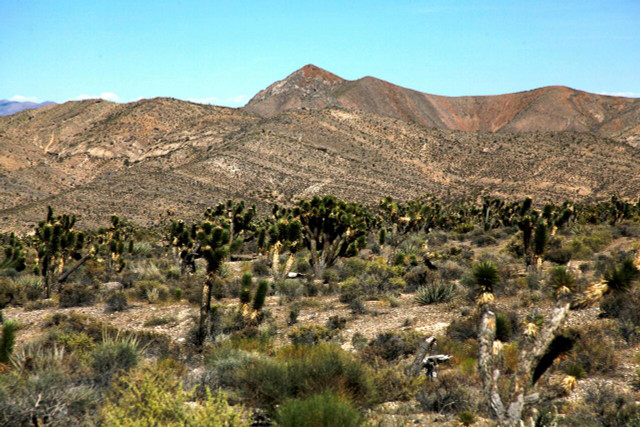


(Foto: CC0 Public Domain / Pexels / Aubrey Haase)
In 2019, business partners Adrián López Velarde and Marte Cázarez hailing from Mexico developed Desserto, a vegan alternative to leather made with the nopal cactus. After working in the leather industry for fashion and automotive manufacturers, they knew about leather’s ethical and environmental impact and wanted to create a vegan, sustainable solution that works without plastic.
It is important to note that cactus leather is no by-product left over from other industries but is exclusively harvested to produce cactus leather. This is different from vegan leather alternatives such as apple leather or cork leather which are made using waste from the food industry.
However, cactus leather has the added bonus of absorbing carbon while growing as well as regenerating the soil around it. In a video showcasing how their cactus leather is made, the Desserto founders jokingly reassure that the biannual harvesting resembles a haircut to the nopal cacti and does not leave any lasting damage to them.
They first cut the leaves, clean them and mash them into a mass that will be dried for three days and later mixed with non-toxic chemicals. Depending on its later use, the cactus mass will be mixed with recycled cotton, recycled polyester or a blend of both. Then, it can be shaped into any form or dyed into any color, using bio-resin and organic pigments. According to the founders, their organic, biodegradable, vegan leather lasts up to ten years and is flexible as well as breathable.
Is Cactus Leather Sustainable?
When we want to estimate whether a material is sustainable, we usually weigh in a couple of factors:
- How much water does the cultivation or processing require?
- Does it harm the environment during cultivation (e.g. through pesticides) or after (e.g. because it is not biodegradable)?
- How much CO2 is spent on producing it?
- What raw materials are used? Are virgin resources used or can the material be created using pre-existing materials? Is it made using renewable sources?
- Is it durable?
- Is it recyclable, biodegradable or compostable?
Let’s answer these questions for cactus leather. Firstly, Desserto’s nopal cacti don’t need irrigation water, meaning the plants grow only with naturally collected rainwater. That is possible since cacti survive on a small amount of water that they draw from the air or soil. This gives cactus leather a remarkable advantage over many other thirsty crops that drink up hundreds of gallons of water to produce natural fibers.
The cultivation also does not require any harmful pesticides or herbicides and even improves biodiversity in the area. Cacti are remarkably resilient plants that grow in degenerated soils unsuitable to many other plants. The cacti are able to absorb 8,100 tonnes of CO2 every year while the entire farm operates on an annual of 15.3 tonnes. This means that cactus leather is not only climate neutral, it even helps to absorb more carbon than it produces which contributes to mitigating climate change and adding to a bioeconomy.
As already briefly mentioned, the raw material is no waste or by-product from other industries. The cacti are exclusively harvested to produce virgin cactus leather. Byproducts from Desserto’s production are used to feed livestock in the area.
The founders say the material lasts up to ten years which seems like the first miss in a series of hits. Animal leather is one of the most durable textiles and can last up to 100 years when properly cared for. Presumably, no vegan leather alternative will be able to compete with that. Cactus leather is relatively new on the market so it is difficult to assess how long it is going to last. But there is a study exploring vegan materials’ durability compared to animal leather — and cactus leather seems to be one of the top contenders.
Lastly, the material is biodegradable according to Desserto, claiming the biodegradation percentage varies between products but they are biodegradable when exposed to “anaerobic thermophilic conditions”, essentially meaning there has to be little oxygen and certain temperatures.
It is important to keep in mind that their materials contain a small amount of recycled polyester, making it difficult to biodegrade naturally. However, the company claims that its cactus leather is recyclable either chemically or mechanically.
Conclusion
Given the eco-friendly properties of the nopal cactus, it is no real disadvantage that cactus leather uses virgin materials instead of waste or pre-existing materials. It absorbs carbon, improves soil and is grown without irrigation. After use, the material is biodegradable and recyclable under specific conditions. It is also pretty durable, however not as durable as animal leather.
Cactus leather is probably the most promising vegan leather in the industry as of now. Desserto was already able to collaborate with big brands such as Karl Lagerfeld, H&M, Beis, Givenchy, Adidas and Everlane, which may seem like a win, but you should still consider quitting fast fashion.
Cactus leather is a scalable, sustainable material ready to replace animal leather in large quantities and contribute to animal welfare and climate protection.
Read more:
- How is Silk Made and is it Vegan?
- Banana Fiber: The Material for Sustainable Fashion From Tree Waste?
- Do Carbon Offsetting Programs Actually Work?
Do you like this post?






